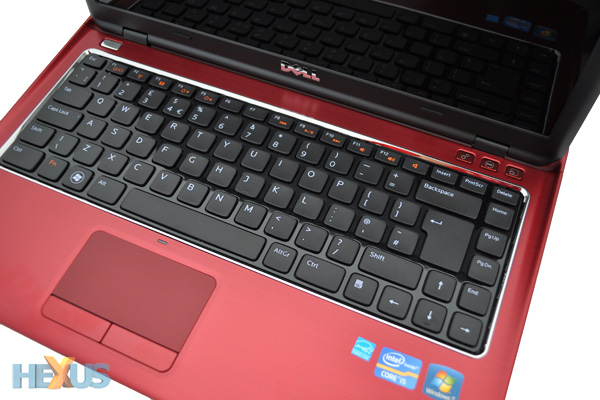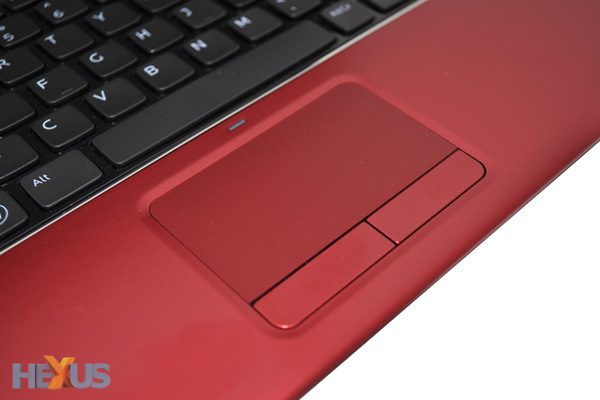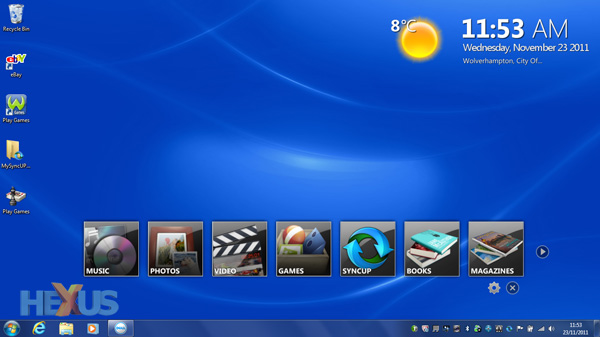User experience
Keyboard and trackpad
The Inspiron 14z has the makings of an excellent mid-range laptop, and it should be a great budget solution for students and families.
The price isn't bad, it looks good, and the internal components suggest decent-enough performance. So where's the catch? Well, there are a few quirks, and unfortunately for Dell, they mostly belong to the laptop's most important areas - the keyboard and trackpad.

Aesthetically, the chiclet keyboard looks lovely and inviting. The contrast of black and red is very attractive, and the keyboard layout is good - no key is too small, and we were able to type at speed almost instantly.
We weren't missing any keystrokes, the keys have plenty of spring to them, and the panel as a whole felt very comfortable under the fingertips. It felt great in the office, but late at night in a quieter environment, you begin to notice how loud the keys are. We wouldn't go as far as to call it a stampede, but honestly, frantic typing on the Inspiron 14z does create a deep pitter-patter that would be noticed in a library.
Noise aside, we found the keyboard to be great in use, but we couldn't say the same about the trackpad.

While the keyboard keys are well sized, with good travel and an audible thump, the trackpad's two buttons are the exact opposite; they're small, mushy and almost void of tactile feedback. They feel so spongy that our light presses often went unregistered, and though we've learnt to apply more pressure, the trackpad buttons still don't feel natural.
The buttons could and should be better, and they're a real shame, as the trackpad surface itself functions well. It could be bigger, granted, but the surface feels lovely and smooth, and it's very responsive, with edge-scrolling functioning particularly well.
Display and sound
Whether or not you like the Inspiron 14z display will largely depend on where you're coming from. Those upgrading from an entry-level netbook will find the 1,366x768 resolution to be a big step up, while those accustomed to higher pixel counts will find the display resolution limited. We fall into the latter camp.
1,366x768 is just fine for everyday web browsing, and it'll suit some users, but we'd love to see Dell offer an optional 1,680x1,050 panel for those who need the extra on-screen real estate.

The resolution could certainly be higher, but what Dell has provided is a panel that's plenty bright with good colour reproduction. Vertical viewing angles are poor, so you'll need to position the display just right, but horizontal viewing angles are surprisingly good - handy for the person sat next to you.
On the audio front, the downward-facing speakers (positioned just below the front edge) really struggle to impress. They're quite loud, but there's no bass to speak of and the absence of depth results in a flat, tinny experience. They're not the worst laptop speakers we've ever heard, but they're average enough to warrant carrying a pair of headphones.
And you might want to keep headphones at hand for another reason; the Inspiron 14z's internal fan has a tendency to get loud. We can't quite explain it, as the laptop never felt hot to the touch, but every once in a while, the fan felt the need to ramp up in speed and create noise.
Software
There are areas in which the Inspiron 14z could easily have been improved, but nowhere is that more apparent than the system software.

Out the box, the laptop is loaded with a large amount of pre-bundled software - and you can't help but notice it as it's everywhere you look. The desktop is covered with icons and a shortcut bar, while the system tray is almost overflowing.
It's not neat, it's not tidy, and what's most frustrating is that some of the software has a tendency to nag, repeatedly. Both McAfee Security Centre and Dell DataSafe present you with large on-screen pop ups that are frankly annoying, and, like all horrible bloatware, many of the pop-ups don't have an option to decline and can only be deferred until later.
We've mentioned the worst offenders, but they aren't the only pre-installed programs. Our laptop's control panel shows a total of 60 installed applications, including various Dell utilities, a trial of Microsoft Office, Blio, Roxio Creator, Skype, Nero Sync, WildTangent Games, Windows Live Essentials and Zinio Reader 4.
Some of the apps are unobtrusive, and a few are actually useful, but do they combine to hamper overall system performance?









